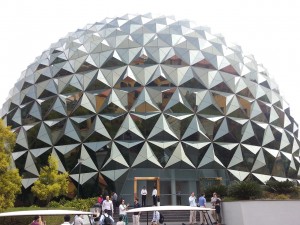My MBA education at the Sauder School of Business has provided me with a number of remarkable opportunities, and none have been more eye-opening than my recent trip to India. The entire student body is now required to travel abroad for two weeks for “Global Immersion”. This year was the inaugural event, and the 92 current full-time MBA students were divided into thirds and sent off to Bangalore, Singapore and Copenhagen. The concept for this dramatic new addition to our MBA program was devised by Murali Chandrashekaran, our Associate Dean. I am truly excited about the depth of experience that I was provided on this trip, and about the effect that Murali’s vision will have on the development of the MBA program.
On the first day of the trip, Murali made reference to Thomas L. Friedman’s “The World is Flat”. The book is based on its author’s own trip to Bangalore, where he developed 473 pages worth of insights surrounding the current drivers for globalization and the effects that they will have on both developed and developing countries around the world. My Global Immersion trip gave me the opportunity to witness Friedman’s inspiration firsthand, and it was impossible to ignore the dramatic effect that globalization is playing on Bangalore’s economy. We visited Infosys and 2adpro, two companies that have thrived by connecting India’s educated human capital with the world’s most developed nations. Visiting these companies really helped bring the “flat earth” concept to reality for us, although it was abundantly clear that both companies have faced (and continue to face) growing pains as the earth continues to “flatten”.
Our visit to Infosys came near the end of our trip, but I’d like to address it first because it was the largest and most internationally-renowned company that we visited. We spent the day at the 300-acre Infosys training facility in Mysore. The magnitude of the Infosys architecture was the first thing that really shocked us; the on-campus theatre looked like a more modern version of Science World, while the main classroom centre was so grand that several of our students immediately compared it to a modern Vatican.
The majority of our time at the Infosys campus was spent touring the facilities, followed by a discussion of the sustainable innovations used in the company’s building practices and an overview of its typical recruitment methodology. The scope of the visit really blew us away – the facility can train up to 15,000 new recruits at a time – and we were also struck by the compensation offered to new employees. Typically, standout Software Engineer undergraduates would receive a maximum salary of 30,000 rupees, which translates to about $7,200 dollars a year. This is on the high end of the pay scale for this industry in India right now, and is plenty to live a very comfortable life in that country, but it certainly doesn’t impress on an international level. This led, of course, to the “a ha!” moment that we all should have seen coming: Infosys is effectively one of the world’s biggest outsourcing companies, and has created revenues upwards of $4 billion/year by bridging the gap between North America’s software development needs and India’s dearth of relatively inexpensive development talent. The whole trip immediately transformed into a massive, in-your-face testament to the “flat earth” theory in action.
Our visit to 2adpro was early in our trip, on our second day in India. The business was similar to Infosys in the sense that it offered digital outsourcing solutions to North American companies. 2adpro specializes in creating advertising – including digital and print – for North American companies, and proudly holds a large and diverse client base that includes Macy’s. The company is jointly owned, and shares an office space, with another major outsourcing solutions provider that focuses on the digitization of print media (like newspapers). 2adpro was listed second in a Deloitte study of India’s fastest-growing tech companies in 2010, having posted revenue growth of 1,649% from 2008-2010. The company continues to grow, and is developing its salesforce throughout the United States other developed nations around the world.
2adpro gave us direct access to their Chief Digital Officer Allan McCulloch for the afternoon, and he provided a much clearer picture of the strengths and weaknesses of his company than what we were able to learn from Infosys. After understanding the root of the business – which although diverse, is relatively easy to understand at face-value – I was interested to analyze the company’s current challenges in the context of Friedman’s flat-earth theory. After building on the competitive advantage of India’s access to cheap development talent, the firm is now being undercut by less-developed nations like the Philippines. No longer the lowest-price outsourcing option, 2adpro is now forced to leverage its experience in the industry and relationship with its clients, and move into a more creative-focused space, adding value and providing a more sophisticated degree of marketing planning for its clients. Later, at Infosys, we witnessed a similar phenomenon; Infosys was moving up the value chain to provide additional consulting services beyond just low-cost software engineering solutions. I was left with as many questions as answers, but wasn’t sure that 2adpro were the best ones to address them – certainly, in their eyes, they were well-equipped to go beyond the moniker of “lowest-cost provider”, but I wanted to continue exploring the question as an outsider. My preconceived biases caused me to be sceptical. My thinking was that North American companies outsourced to India as a means to save money, but would otherwise prefer to use North American agencies to plan their marketing and develop advertising messages. I was interested to keep this question in mind during my later project with Bangalore’s leading MBA factory, IIMB. I’ll explore my answer to that question in my next blog post.
In conclusion, my experience has suggested that Friedman’s theory holds – if the world isn’t flat now, it’s rapidly flattening. Certainly, the effect isn’t all positive – India has long held a dramatic division of wealth, and this division is getting worse as the country’s inflation spirals upwards, causing additional need for change in government policy – but the process isn’t finished yet, and likely won’t be for decades to come. Nevertheless, many of India’s largest and fastest-growing companies are sprouting from the newfound ease of communication across the globe, and this network is continuing to capture additional nations in its web. Both Infosys and 2adpro are moving up the value chain, and the Indian educational system might need to adapt to this trend amongst employers. The very nature of this issue, however, validates the theory that nations around the world are being drawn together



